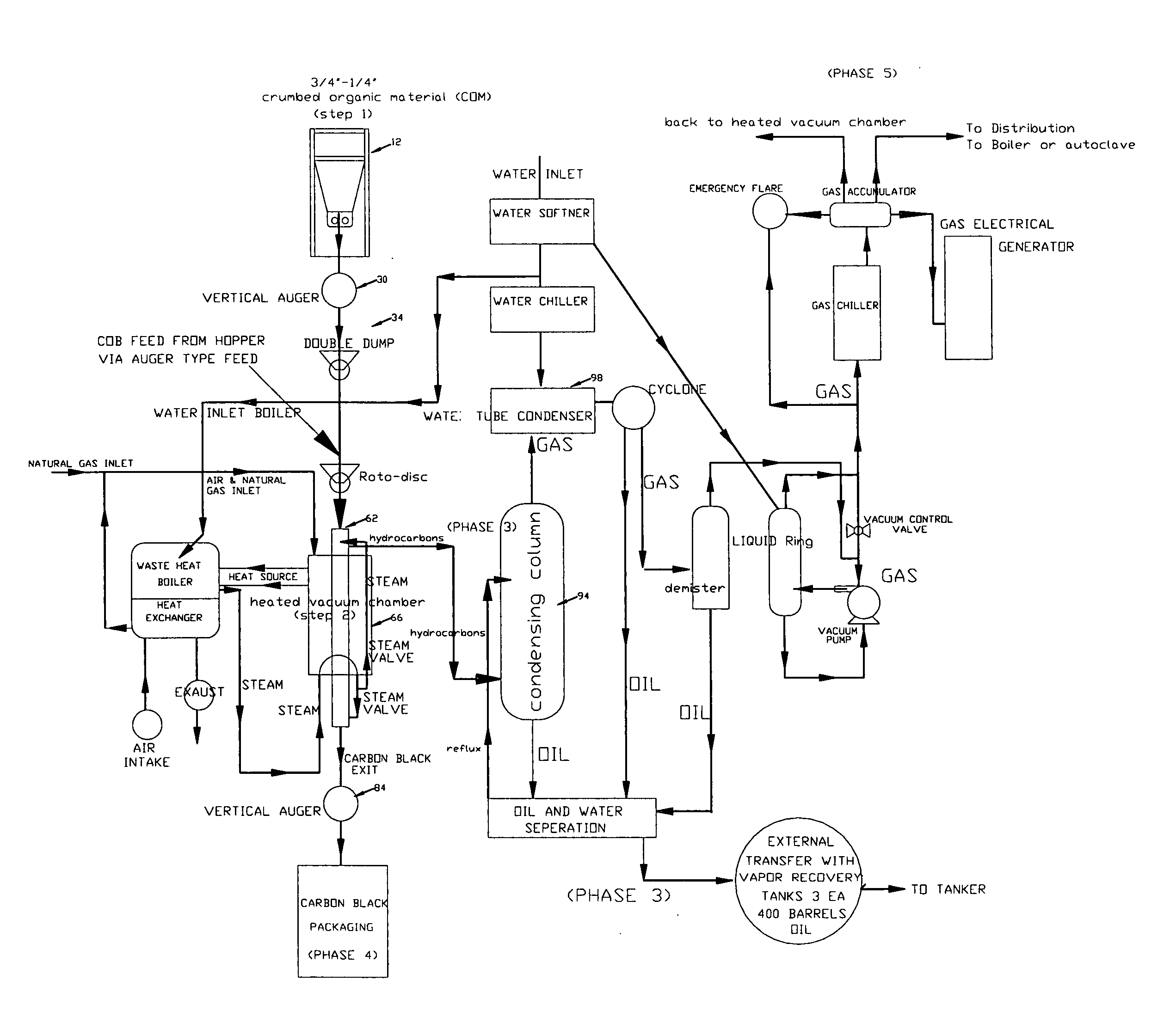System and method for recycling waste into energy
a technology of waste and energy, applied in the direction of solid fuel combustion, lighting and heating apparatus, combustion types, etc., can solve the problems of no effective way of monitoring the vacuum within the system at potential leakage sites, and the application of a metering mechanism for waste material amoun
- Summary
- Abstract
- Description
- Claims
- Application Information
AI Technical Summary
Benefits of technology
Problems solved by technology
Method used
Image
Examples
Embodiment Construction
[0018] A system according to the present invention is well suited for converting various types of waste materials into energy, and for the purposes of explanation as discussed below is used to convert waste rubber particles of a type formed from worn tires into energy. Those skilled in the art will appreciate, however, that the system and method disclosed herein may be used to convert various other types of waste materials into energy as discussed below.
[0019]FIG. 1 illustrates a belt conveyor 12 which may be used to convey rubber particles from an initial dump hopper 14 into a staging hopper 16. The conveyor 12 may be supported on a suitable frame structure 18, with a motor and gearbox assembly 20 used to power the conveyor 12. A magnetic drum 22 is provided adjacent a discharge end of the conveyor 12 for minimizing the amount of metal input to the hopper 16.
[0020] The hopper 16 may be provided with a support structure 24 which includes a plurality of load cells 26 for measuring ...
PUM
| Property | Measurement | Unit |
|---|---|---|
| length | aaaaa | aaaaa |
| temperature | aaaaa | aaaaa |
| temperature | aaaaa | aaaaa |
Abstract
Description
Claims
Application Information
 Login to View More
Login to View More - R&D
- Intellectual Property
- Life Sciences
- Materials
- Tech Scout
- Unparalleled Data Quality
- Higher Quality Content
- 60% Fewer Hallucinations
Browse by: Latest US Patents, China's latest patents, Technical Efficacy Thesaurus, Application Domain, Technology Topic, Popular Technical Reports.
© 2025 PatSnap. All rights reserved.Legal|Privacy policy|Modern Slavery Act Transparency Statement|Sitemap|About US| Contact US: help@patsnap.com



